Bowers and Wilkins don’t have the biggest selection in the world, but each of their products has stood out in their respective markets. One market they have yet to tap into is the ever-growing world of true wireless earphones. They have released two different models to look into, the PI5 and PI7. This review will focus on the PI5, but both of these new products aim for the higher end of true wireless. The PI5 will set you back $249, which is quite a bit of cash for wireless earbuds. Let’s dive right into them and see how they stack up.
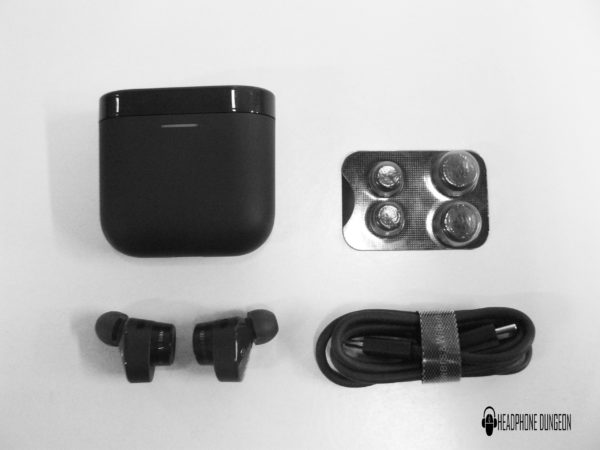
What You Get
- PI5 Headphones with ear tips (M)
- Charge Case
- USB-C Charging Cable
- Ear Tips (S/L)
- Literature Pack
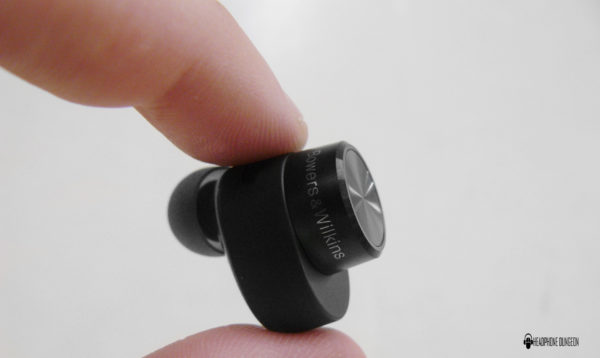
Look and Feel
When you see a Bowers and Wilkins product, you get a certain level of class. The PI5 continues that design philosophy with an elegant aesthetic make-up. The sleek charcoal finish provides a fashionable look for a true wireless. If you’re looking for something stylish, you’ll get that with the PI5 as well as any Bowers and Wilkins product. The structure of the earphone itself reminds me of the Sennheiser Momentum 2, but with a wider ridge protruding from the housing. This makes a more stable fit, as I feel the added ridge is better supported within your ear. It requires a twist when first inserted, but twisting the earphone too far will cause some discomfort. Getting the PI5 in that sweet spot will offer a great level of security and comfort, so much so that the fit should be invisible.
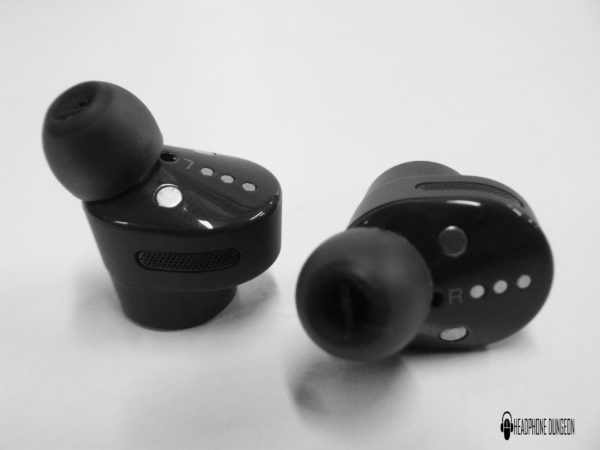
Design and Functionality
A lot of times, true wireless earphones can have a small driver and not enough loudness in response. Thankfully, the PI5 sports a 9.2mm dynamic driver system with two dedicated amplifiers to combat this notion. The results are a sound that gives you a sufficient amount of volume with a respectable amount of room for gain adjustment. Your music should like it’s receiving the proper boost that some true wireless earphones fail to deliver. Bowers and Wilkins also give the PI5 a single microphone for phone calls, voice assistant, and active noise cancelation. In effect, the level of noise-canceling isn’t as strong as other Bluetooth earphones at this price range. It’s effective but might not feature the level of isolation you’re expecting.
Like most true wireless earphones of this ilk, the PI5 features a touch-sensitive control scheme that’s used to access all of its advertised features. Playback controls, ANC, and voice assistant can be accessed by simply tapping the earphone’s flat surface, as per the PI5’s instructions. The most important aspect of these actions is how well they respond, and thankfully they respond well. Each function gives you a beeping feedback response which can be a bit sensitive at times but is still consistently reliable.
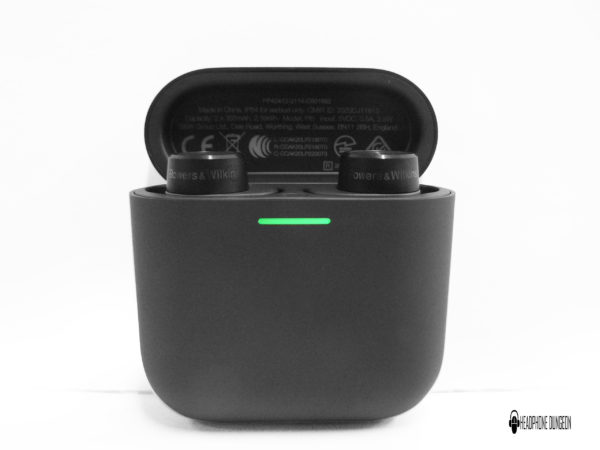
Bluetooth
While the PI5 supports Bluetooth 5.0, the pairing was a bit strange for me. It requires you to press a button in the middle of the charging case in order to pair. This button is small, not as easy to press down all the way. Connecting the earphones took me a few tries, but after you figure it out it shouldn’t be too much of an issue. I just wish Bowers and Wilkins went with a simpler pairing method. The PI5 uses aptX for its streaming resolution and quality connection between the source and the earphones. Other CODEC options would have been appreciated, but if your sole format is of this standard, there isn’t anything to complain about.
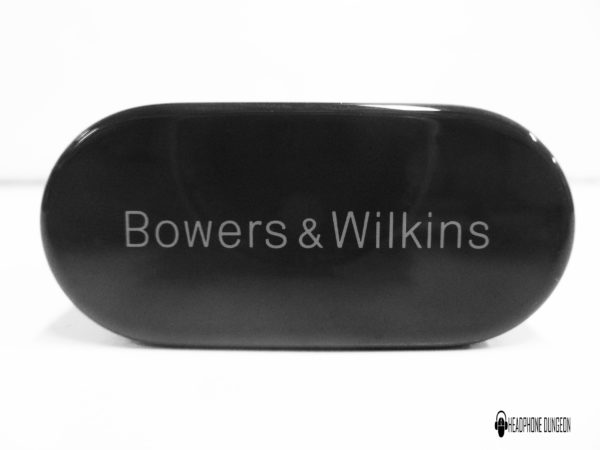
Battery Life
With the PI5, you can expect 4.5 hours off of a single charge. It doesn’t sound like a significant amount of battery life, but the earphones only require 15 minutes of charge for two hours of playtime. The charging case included adds up to about 25 hours of battery life. It might get a bit annoying to have to keep charging your earbuds so often, but the 15-minute charging is an admirable way to combat a more minimal battery life.
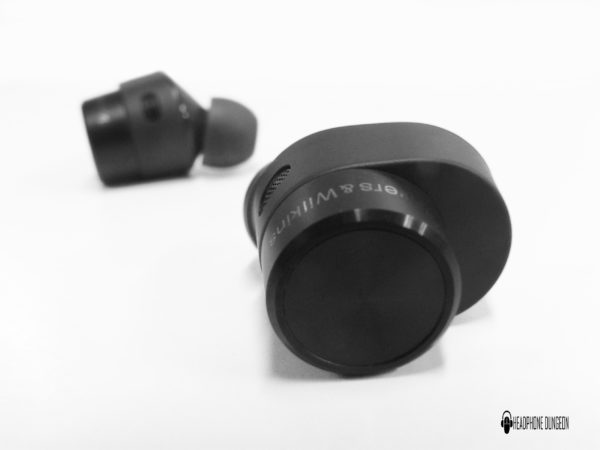
Soundstage
We know the drill with true wireless by now. Most of the time, the soundstage isn’t the biggest concern with Bluetooth earphones, and that makes products with good width really stand out. The PI5 is one of those true wireless systems with a linear sense of width that expands to a natural degree. When you hear the PI5, you get the sense that things are more or less in the right place without being too congealed in the middle. The frequencies are given the amount of space necessary to showcase clarity with instruments and effects. You won’t find a significant amount of depth here, but the image will be mostly full.
Low End
The PI5 has a sound signature you rarely see on true wireless earphones. For one, the bass response here is very reserved. If you’re looking for a thick, impactful bass, you won’t get that here. Instead, the PI5 offers a controlled, easy-going tonality with clean textures and a little added rumble sub-bass. The frequencies remained isolated, staying out of the bleed territory a lot of wireless earphones go in the low-mids to ensure that massive bass timbre. This earphone is more subtle with its bass, and it’s a better timbre for it.
Mids
Although I enjoyed the reserved nature of the lows, I thought the mids could have used a bit more energy. I appreciated the balanced method here, but I thought the frequencies could let themselves loose a bit and show some color. With that being said the clarity here is still very good, and vocals especially sound great. Listening to tracks from Jeff Rosenstock gave me the details needed to showcase the character in his performance. However, this is also where I could have used that extra liveliness in the timbre, as the tracks should have appeared more frantic than they were on the PI5. Nonetheless, the response here is very clean.
Highs
Treble response is very digestible. The tonality is reserved like the bass, but not as subtle with its details. Textures still find a way to pop while playing off a smoother tonality that doesn’t shift into any considerable brightness. The energy that was lacking in the rest of the sound signature is more greatly represented here.
Summary
At its price point, Bowers and Wilkins offer something different from your standard true wireless fare. The PI5 competes with the highest end of true wireless, and its sound signature makes a strong case for it. Its more balanced, careful response is something truly unique to true wireless, and if that sounds like something you’re interested in, then you can bet on the satisfying sounds of the PI5.
Pros and Cons
Pros: Aesthetic, Clear and clean sound signature, Good width, Responsive controls
Cons: Weaker battery life
The Bowers and Wilkins PI5 is available at Audio 46.
Headphonedungeon may get a commission from retail offers.

